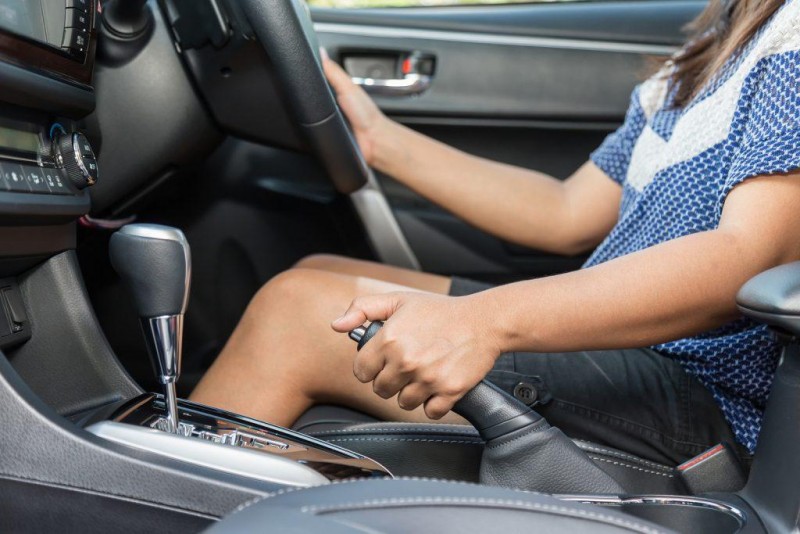
Driving enthusiasts and novices alike often find themselves in a quandary when it comes to parking: should you engage the handbrake or leave it be? The answer may seem straightforward, but let's unravel the complexities and burst the myths surrounding this common automotive conundrum.
Before delving into the debate, it's crucial to grasp the fundamental purpose of the handbrake. Also known as the emergency brake or parking brake, this mechanism is a secondary braking system designed to prevent the vehicle from rolling when parked.
The handbrake operates independently of the primary braking system, typically engaging the rear brakes. It secures the vehicle on an incline, prevents movement, and contributes to overall safety.
When you engage the handbrake, a cable is activated, pulling on the brake shoes or pads in the rear brakes. This creates friction, effectively preventing the vehicle from rolling. It's a failsafe, providing an extra layer of protection beyond the primary brakes.
Now, let's explore the compelling reasons why many advocate for using the handbrake when parking.
One of the primary benefits is the prevention of rollbacks, especially on steep slopes. When you park on an incline, there's a natural tendency for the vehicle to roll backward, placing stress on the transmission and posing safety risks. The handbrake adds an extra layer of security, ensuring your car stays put.
Imagine this scenario: you're parked on a hill, and you step out of your car for a moment. Without the handbrake, there's a risk of the vehicle slowly creeping backward, potentially causing accidents or damage to your car or others.
Engaging the handbrake also alleviates stress on the transmission. This is particularly relevant for automatic transmissions, where the parking pawl can bear excessive load when parked without the handbrake. The parking pawl is a small metal pin that engages with the transmission's gear mechanism, preventing the wheels from turning. Without the handbrake, the entire weight of the vehicle rests on this small component, potentially leading to premature wear and tear.
By using the handbrake, you distribute the load evenly between the transmission and the handbrake mechanism, reducing strain on any single component. This simple practice can contribute to the longevity of your vehicle's transmission system.
In adverse weather conditions, like strong winds or icy surfaces, using the handbrake provides additional stability. It minimizes the chances of your vehicle being nudged by external forces. Picture a snowy day: your car is parked, and a gust of wind or a slight push from another vehicle could set it in motion. The handbrake acts as a stabilizing force, preventing such unexpected movements.
Moreover, in situations where you might be parked on uneven terrain or gravel, the handbrake ensures your car remains stationary, offering peace of mind when you return to your vehicle.
Despite the merits, there are dissenting voices that argue against using the handbrake in certain situations.
In extremely cold conditions, the handbrake may freeze, making it challenging to disengage. On the flip side, in scorching heat, the handbrake may seize due to expanded components. This is a valid concern, especially for those living in regions with extreme temperature fluctuations.
During winter, when temperatures plummet, moisture can freeze the handbrake components, causing them to become stiff. On the other hand, in hot climates, prolonged exposure to high temperatures can lead to thermal expansion, making it difficult to release the handbrake.
Detractors also point to potential wear on the handbrake components over time. Frequent engagement and disengagement could lead to premature wear, necessitating more frequent maintenance. This argument suggests that the wear and tear on the handbrake system might outweigh the benefits it provides.
However, it's essential to note that modern vehicles are designed to withstand regular use of the handbrake. Regular inspections and maintenance can help identify and address any issues before they become significant problems.
To shed light on this debate, let's turn to automotive experts and their take on the handbrake matter.
Most automotive professionals recommend using the handbrake regularly. They argue that the benefits of enhanced safety and stability far outweigh any potential downsides. Experts emphasize that the handbrake is an integral part of the overall braking system, and its proper use contributes to the overall health and safety of the vehicle.
In situations where the handbrake might experience freezing or seizing, experts recommend periodic checks and maintenance. Lubricating the handbrake components and ensuring they are in good condition can mitigate potential issues.
Consulting your vehicle's manual is always a wise move. Manufacturers often provide specific recommendations regarding the use of the handbrake based on the vehicle's design and specifications. Following these guidelines ensures that you're aligning with the intended usage as envisioned by the vehicle's creators.
Manufacturers may offer insights into the optimal conditions for using the handbrake and any precautions to take in extreme weather. Additionally, the manual may provide information on how to properly engage and disengage the handbrake to minimize wear and tear.
In conclusion, the handbrake debate boils down to a matter of context and personal preference. While it may not be necessary in all situations, using the handbrake on inclines and for added stability is generally a prudent practice.
Ultimately, understanding when and why to use the handbrake is key. It's a tool designed to enhance safety, and when used judiciously, it can contribute to a trouble-free parking experience. Consider your parking environment, weather conditions, and the specific recommendations of your vehicle's manufacturer. By striking the right balance and incorporating the handbrake into your parking routine when appropriate, you can enjoy the benefits of added safety and peace of mind.
How Celebrating Constitution Day Strengthens India's Democratic Ideals
PM Modi Calls for Record Voter Turnout as Rajasthan Gears Up for High-Stakes Assembly Elections